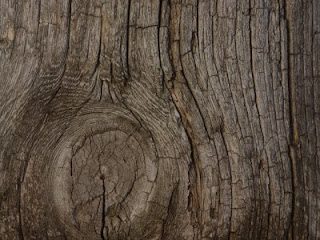As explained in a previous post, my crate will be made from wood and it will be slightly worn. Because of this I will have to use different kinds of textures and maps to match how the object looks in real life.
Wood usually has a specific grain which, unless sanded and varnished, produce a bumpy texture. I can replicate this feature by using what is known as a normal map. Normal maps are 2D images that define a 3D depth in the pixel colours, which means normal maps often look similar for different models. For my model I want the bumps to follow the grain of the wood, so I can adapt my coloured base texture and make it into a normal map so the grain has accurate bumps. As you can see in the image below, wood can sometimes have quite deep bumps and gaps in which could easily be replicated with a normal map.

All of the raised parts of the wood grain would also reflect light in a different way than the grooves of the grain. This kind of effect would be achieved with a specularity map. Specularity basically defines how shiny textures are, and what colour they might reflect. On a specularity map, darker colours will make the texture less shiny, and lighter colours more shiny, and the hue of the colour will define what colour gets reflected from that part of the texture. Depending on how wood is treated, it can be very shiny or very dull, and my crate will be made of wood that is very dull, although all objects reflect light at least a small bit. I have provided an image below to show how shiny wood can get.














